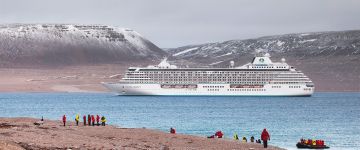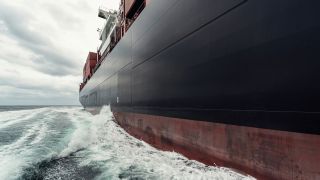Several years ago, the discovery of two ships caused a sensation and reminded people of a gruesome episode in the history of exploration. The wrecks of the HMS Erebus and HMS Terror ships from Franklin's infamous lost expedition were found in the Arctic ice fields of Canada within just two years of each other. They had set off in the middle of the 19th century to explore a Northwest Passage running from the Atlantic to the Pacific through the Polar Sea. Such a passage would shorten ship journeys between Europe and East Asia by about 5000 kilometers. Centuries of previous exploration attempts had failed, and this expedition also ended tragically. The entire expedition disappeared without a trace and remained undiscovered for a long time despite extensive searches. Only the more recent sustained efforts of Canada led to discovery of the ships and a probable clarification of the expedition's fate. The discovery sites and interviews with the native Inuit people suggest that at least some of the expedition members survived the initial disaster but didn't manage to reach the mainland.
Dwindling ice revitalizes ship traffic
The dream of an ice-free ship passage through the arctic waters lives on. And it may become reality in just a few decades, because the impacts of climate change are greater in high latitude areas due to leverage effects. In 2007, for example, the Canadian part of the Northwest Passage was completely ice-free for the first time since records have been kept. In 2016, the first cruise ship passed through the Passage.
But the southern section of the route, which runs for more than a thousand two hundred nautical miles along Greenland's west coast, will become increasingly interesting for shipping before regular transit traffic through the Arctic part of the route can even be considered. The decreasing ice density is attracting more and more cruise ships to the area, and intra-Arctic transport and supply traffic is also increasing. One problem is the region's still rudimentary infrastructure, especially for communications and rescue services. In maritime shipping, it is essential to be accessible at all times by radio, and this has been mandatory for professional ocean shipping since the Titanic disaster. However, this is only possible if a receiving station is always available. Satellite radio is the usual standard on the high seas, but it is not reliably available in Arctic waters. That is why only shortwave is permitted for maritime radio service beyond the 70th parallel, which applies to the northern half of the Greenland route.
Greenland operates a chain of radio stations along its west coast. Eleven of these stations are equipped with shortwave systems from Rohde & Schwarz.











